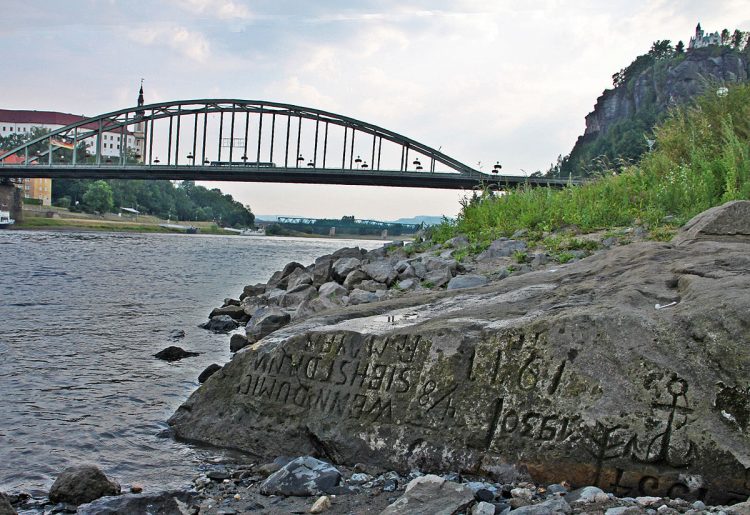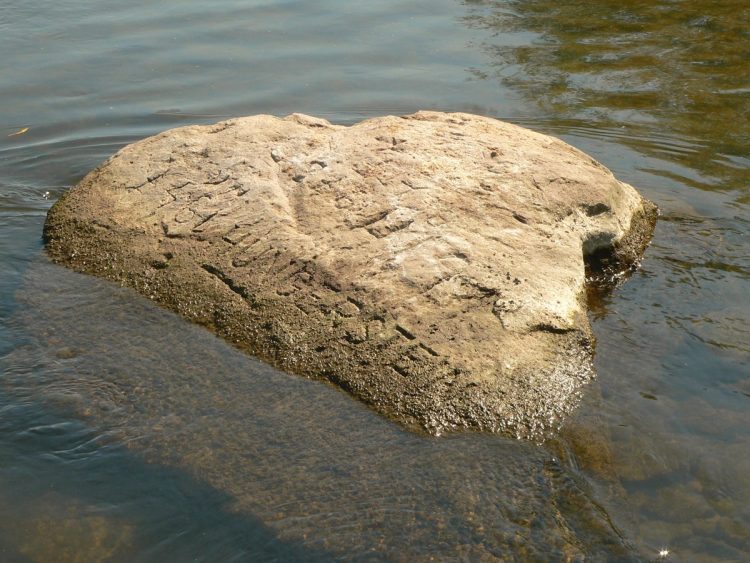“When you see me, cry”. This is just one of the ominous messages carved into the medieval ‘hunger stones’ that have been revealed by sever drought in the Elbe River, near the northern Czech town of Decin.
Hunger stones, or ‘hungersteine’ as the Germans call them, are carved boulders or river plates that only become visible in severe droughts, when water levels drop particularly low. The inscriptions chiselled into them are believed to have once been used to warn people that hard times and famine were coming. The Elbe river, which starts in the Czech Republic and flows into Germany features dozens of hunger stones with inscriptions dating back to the 17th century, but other European rivers feature such ominous stones with carvings from as early as 1417.

Photo: Norbert Kaiser/Wikimedia Commons (Attribution-Share Alike 3.0 Germany)
The idea behind hunger stones was to warn people that a drought and famine similar to those of the years carved into the stones were coming. This way, they could prepare for the worst, stocking up on food and fodder for their cattle. Over a dozen hungersteine have been spotted in the Elbe river this year, an eerie confirmation of Europe’s record-setting drought.
“It expressed that drought had brought a bad harvest, lack of food, high prices and hunger for poor people. Before 1900, the following droughts are commemorated on the stone: 1417, 1616, 1707, 1746, 1790, 1800, 1811, 1830, 1842, 1868, 1892, and 1893,” researchers wrote about one of these hunger stones in a 2013 study on the most severe droughts in Czech history.

Photo: Axel Hindemith/Wikimedia Commons (Attribution-Share Alike 3.0 Germany)
Some of the ominous messages carved into these hunger stones are a clear reminder of the devastating effects droughts had on people’s lives in centuries past. One of the ones that was recently revealed in the Elbe river this summer features a message in German that translates as “when you see me, cry”, while an earlier one, carved in Czech reads “don’t cry, girl, don’t fret. When it’s dry, just spray your field wet”.
The Elbe river features the highest number of hunger stones, but they have also been spotted in other rivers, like the Rhine, in Germany.
Interestingly, these ancient warning signs only came to be known as hunger stones in the mid 20th century. The name was inspired by an inscription on one such stone that read “Hungerjahr 1947”, German for “Year of Hunger 1947”, which refers to the great famine that affected Germany in the winter of 1946-1947, after World War 2.
People continue to mark sever droughts by carving new hunger stones, with some of the newer ones featuring inscriptions like “Anno 2003”. It marked Europe’s hottest summer on record since at least 1540.






